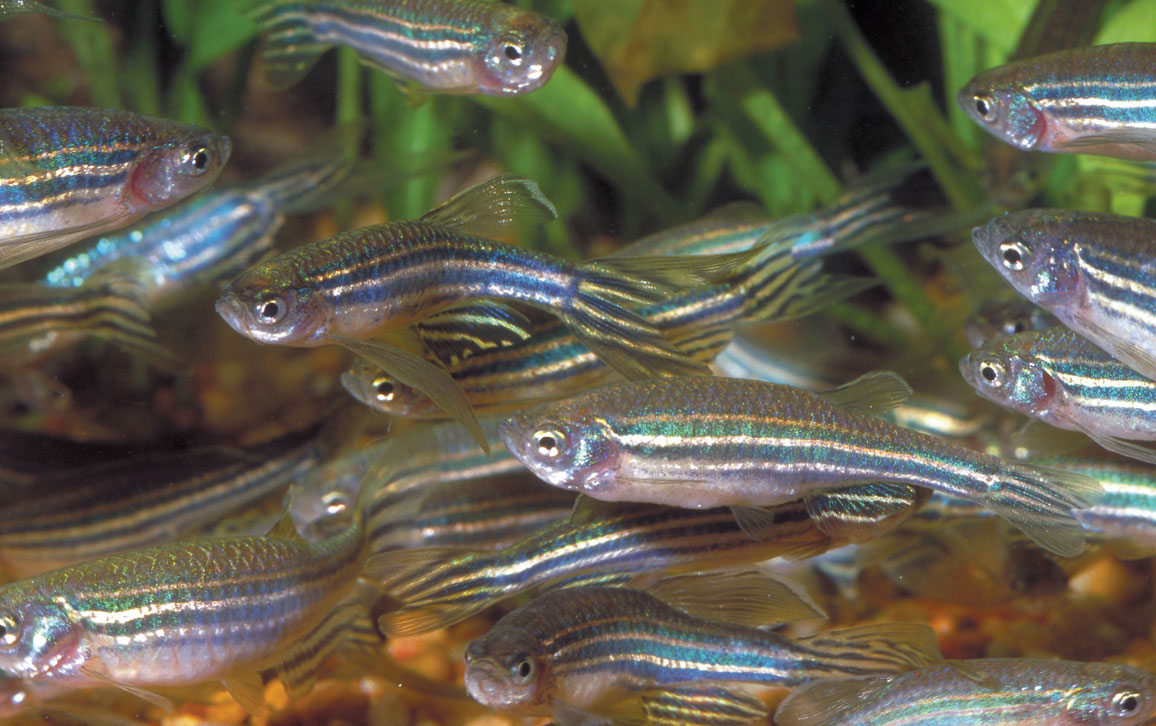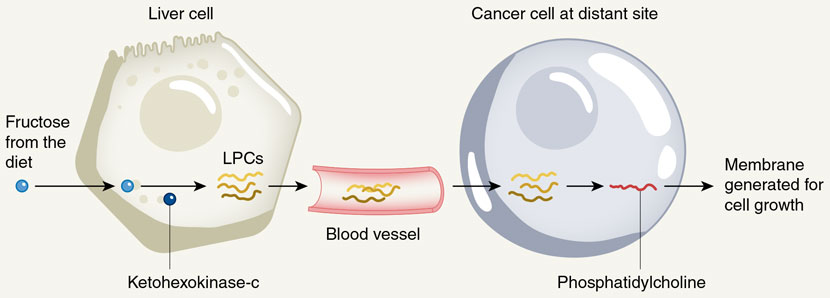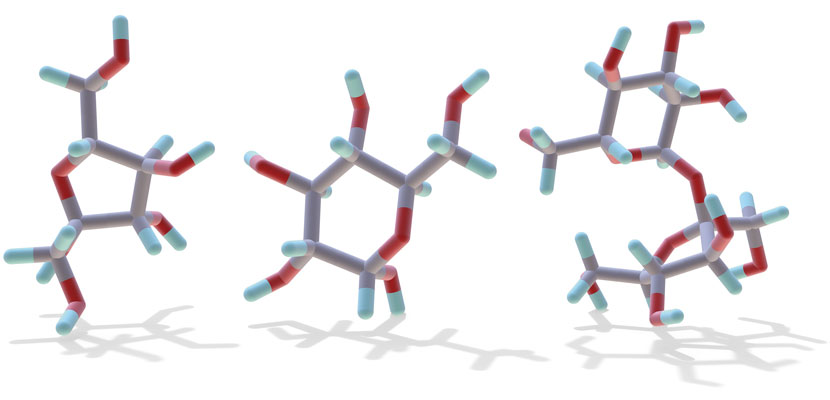
This Article From Issue
May-June 2025
Volume 113, Number 3
Page 133
It’s time to feed the fish at Gary Patti’s lab. Patti, a chemist at Washington University in St. Louis, and his team keep their fish on a very specific diet: fructose dissolved right into the water of their tank. These zebrafish aren’t just being given a little treat; the fructose is labeled with a chemical tracer that will allow Patti’s team to follow the sugar through its metabolic journey. The zebrafish swimming through the syrupy tank all have tumors, and their sweetened environment might play a significant role in accelerating the cancer’s growth. As Patti and his team reported in a recent issue of the journal Nature, they used these experiments to discover an unexpected way that high-fructose diets—at least in animal models like these—lead to increased tumor development, without changing body weight.
“Glucose and fructose have the same chemical formula, and we know that cancer cells are addicted to glucose,” Patti says. “We’ve known that for about 100 years.” With this understanding, he and his team expected cancer cells to have the same greed for fructose. The cancer cells did use the fructose to ramp up their uncontrolled proliferation, but not directly, like they do with glucose.

Mark Smith/Science Source
After confirming that fructose promoted tumor growth in the zebrafish, Ronald Fowle-Grider, a postdoctoral fellow in Patti’s lab, tried to reproduce the result by giving fructose to human cancer cells in petri dishes. But he did not observe any increased growth in the isolated cells. “We had initially assumed that cancer cells would take up fructose and utilize it,” Patti recalls. “But we were surprised to discover that the tumors didn’t have the biochemical machinery to break down fructose.”
It turns out that cancer needs a middleman for the job. “Fructose did not feed the tumors directly,” Fowle-Grider explains. Instead, the body converts fructose into a different kind of nutrient, called lysophosphatidylcholines (or LPCs). “It’s a type of lipid made by the liver, and those LPCs were then transferred to the tumors, and, as it turns out, tumors really like LPCs,” Fowle-Grider said. The cancer cells could access only the by-products of fructose metabolism passed along by the organism’s liver and intestines. The study of how small molecules such as LPCs move through the different tissues of our bodies is called metabolomics, and it’s receiving more attention in cancer research.

H. C. D. Medeiros et al., Nature 636:580.
To enable tumor growth, rapidly dividing cancer cells need a lot of resources. In addition to needing the energy that glucose provides, they also need the lipids that fructose provides in the form of LPCs to build the membranes of new cells. Cancer cells siphon what they need from their surroundings. When Patti reflected on their findings, it became clear why they had observed increased growth only in the animal models, but not in the isolated cells. “The small intestine and liver do a good job of clearing fructose so that little reaches systemic circulation,” he says. Therefore, it has been considered unlikely that fructose would reach high enough levels in the circulatory system to drive the growth of tumors outside of these organs. However, Patti’s findings suggest that LPCs could potentially reach more distant tissues, and that this potential for wider circulation might increase with higher fructose intake—meaning that fructose could affect more types of cancers than previously understood.
“We’ve cured cancer a million times over in a dish. But we haven’t managed to in vivo,” shares Rachel Perry, an endocrinologist at Yale School of Medicine. “This study really highlights that we need to think about fructose not really as a direct fuel for tumor cells, but rather as an indirect signaling molecule telling the cell to secrete components to make new cell membranes, which are required for rapid cell division. It forces us to have a systemic perspective in terms of what’s going on, which jives with how physiology works.”
Perry appreciated how Patti’s group used tracers to reveal the mechanism behind fructose-fueled cancer growth, but because her lab also uses tracers, she emphasized that there are no simple interpretations of these types of studies: “The tracer studies were one of the strengths of the paper, but they also have to be interpreted with a great deal of caution. There are a ton of hormones and metabolites that are associated with fructose that could be altered here. And the same criticism can absolutely be applied to everything we’ve published as well. It’s just a part of the game.”

Alfred Pasieka/Science Source
Nonetheless, both Perry and Patti are hopeful that this kind of metabolomics research will soon take a larger role in cancer treatment. The ability to affect cancer growth with something as simple as reducing dietary fructose intake would be a valuable intervention in the fight against the disease. Patti has always viewed diet as a field in which we are all scientists. “In some sense, we do experiments with food all the time. I think everybody’s tried some kind of diet, whether it be low-carb, vegan, Mediterranean, and so on,” he says. “The idea that diet could be used as a way to modulate the response to cancer, or at least influence the development of the disease, is quite provocative.”
Perry sees the potential for metabolomics research to give cancer patients greater control over their treatment. “I think there’s a large opportunity for us to do studies in animal models, to generate those recommendations for people, because folks with cancer are very eager to have these recommendations,” he says. “That means that we need to do the work to create them.”

American Scientist Comments and Discussion
To discuss our articles or comment on them, please share them and tag American Scientist on social media platforms. Here are links to our profiles on Twitter, Facebook, and LinkedIn.
If we re-share your post, we will moderate comments/discussion following our comments policy.